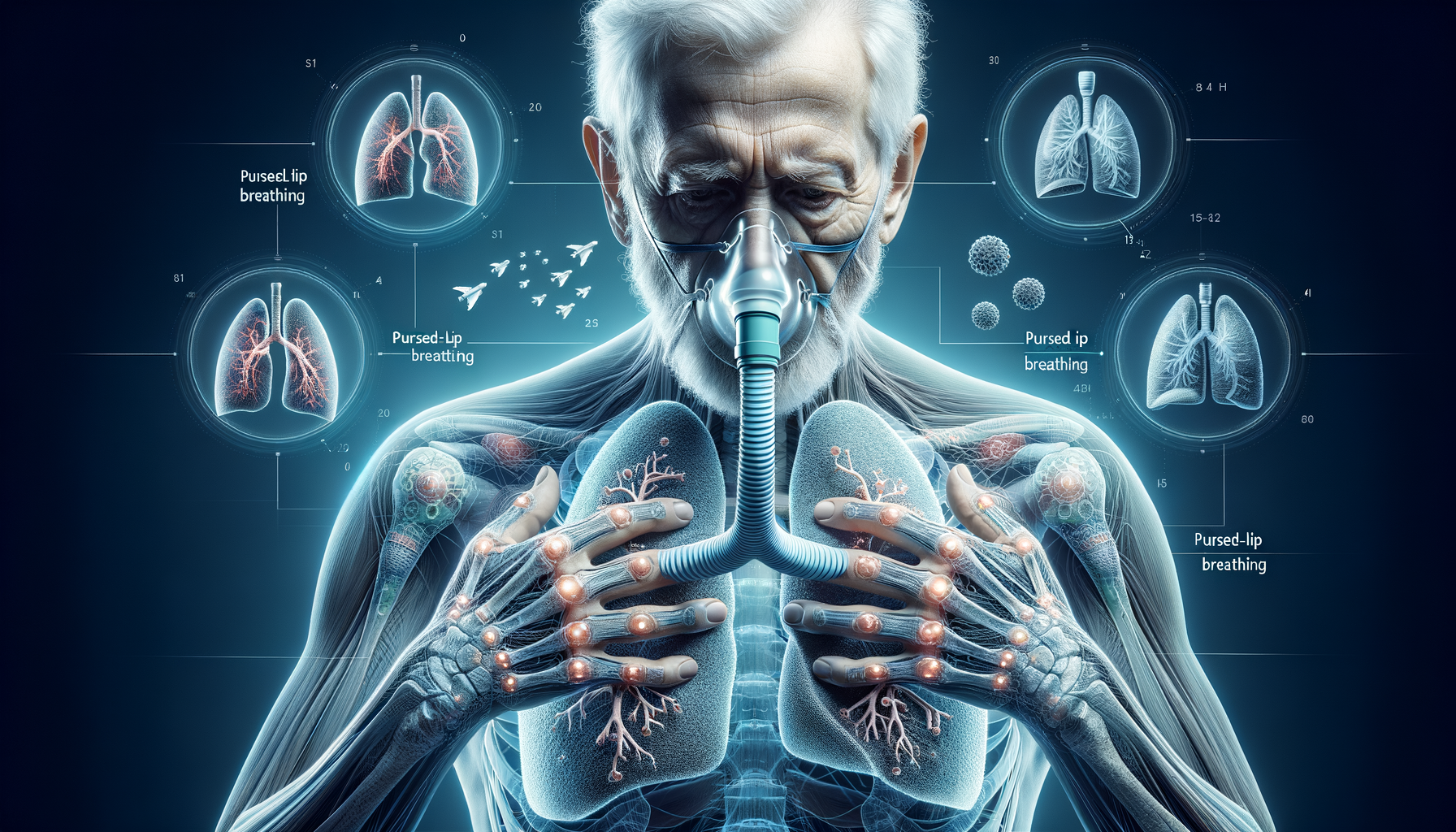How Pursed-Lip Breathing Can Help Seniors With COPD Breathlessness
Is breathlessness a constant companion, making everyday tasks a struggle? Explore how a simple breathing technique might offer a sense of control over shortness of breath in individuals experiencing COPD. Understanding this method could provide valuable insights into managing discomfort.

Understanding COPD and Its Impact on Breathing
Chronic Obstructive Pulmonary Disease (COPD) is a progressive lung condition that makes breathing increasingly difficult over time. Characterized by persistent respiratory symptoms and airflow limitation, COPD is primarily caused by long-term exposure to harmful substances such as cigarette smoke. For seniors, the challenges posed by COPD can be particularly daunting, often leading to a diminished quality of life. Daily activities that once seemed trivial can become monumental tasks, heavily influenced by the constant struggle for breath.
Breathlessness, or dyspnea, is a hallmark symptom of COPD. It occurs when the airways become obstructed or narrowed, making it difficult for air to flow in and out of the lungs. This sensation of breathlessness can be distressing, leading to anxiety and a reduction in physical activity. As a result, individuals with COPD often find themselves in a cycle of inactivity and worsening symptoms. Understanding and managing this breathlessness is crucial for maintaining a better quality of life.
For seniors, managing COPD requires a comprehensive approach that includes medication, lifestyle changes, and breathing exercises. Among these, breathing exercises play a pivotal role in helping to alleviate breathlessness and improve lung function. One technique that stands out is pursed-lip breathing, a simple yet effective method that offers numerous benefits.
The Benefits of Pursed-Lip Breathing for Seniors with COPD
Pursed-lip breathing is a technique that involves inhaling slowly through the nose and exhaling gently through pursed lips, as if blowing out a candle. This method can be particularly beneficial for seniors with COPD, offering a range of advantages that contribute to improved respiratory function and overall well-being.
One of the primary Benefits of Pursed-Lip Breathing for Seniors with COPD is its ability to slow down the breathing rate and improve ventilation. By prolonging exhalation, this technique helps to prevent airway collapse, allowing more air to be expelled from the lungs. This leads to a decrease in the sensation of breathlessness, providing much-needed relief for those struggling with COPD.
Additionally, pursed-lip breathing can enhance oxygen exchange in the lungs. The technique encourages deeper breaths, which can help improve the delivery of oxygen to the bloodstream. This is particularly important for seniors, as efficient oxygen exchange is crucial for maintaining energy levels and supporting daily activities.
Moreover, this breathing technique can promote relaxation and reduce anxiety, which are common challenges faced by individuals with COPD. The focus on controlled breathing can have a calming effect, helping seniors to manage stress and improve their overall mental well-being.
Step-by-Step Guide to Practicing Pursed-Lip Breathing for COPD Breathlessness
Learning how to effectively practice pursed-lip breathing can empower seniors with COPD to take control of their breathlessness. Here’s a Step-by-Step Guide to Practicing Pursed-Lip Breathing for COPD Breathlessness that can be easily incorporated into daily routines:
- Find a comfortable position: Sit upright in a chair or lie down in a relaxed position. Ensure that your shoulders are relaxed, as tension can hinder effective breathing.
- Inhale through the nose: Close your mouth and take a slow, deep breath in through your nose. Count to two as you inhale, ensuring that the breath is steady and controlled.
- Purse your lips: Pucker your lips as if you are about to whistle or blow out a candle. This creates a narrow opening for the air to escape, which is essential for the technique.
- Exhale slowly: Gently exhale through your pursed lips, counting to four. Focus on making the exhalation longer than the inhalation, which helps to expel more air from the lungs.
- Repeat: Continue this pattern of inhaling through the nose and exhaling through pursed lips for several minutes. Aim to practice this technique regularly, especially during periods of breathlessness.
By following these steps, seniors can gradually improve their ability to manage breathlessness, enhancing their comfort and quality of life.